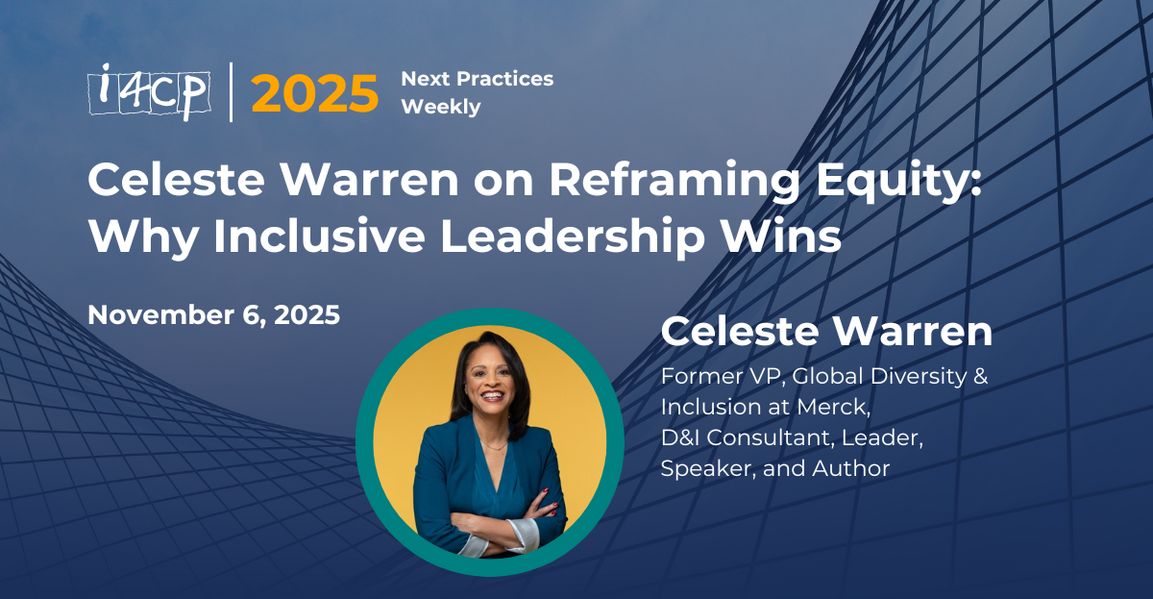Next Practices: 2022 Talent & Learning Priorities
The Talent & Learning Next Practices Monthly series provides a forum for the Talent and L&D leadership community to come together to discover and advance next practices. Each month, you’ll hear from executives in Talent and/or Learning from some of the largest and most respected organizations in the world, learn about the latest i4cp research, and share and receive ideas from your peers.
This month we focused on looking at the 2022 year ahead. The discussion was facilitated by Senior Research Analyst Tom Stone, who was joined by John Coné, chair of i4cp's Chief Learning & Talent Officer Board and former VP of Learning at Dell. The talent and learning portion of the recently released i4cp report 2022 Priorities and Predictions was used to focus the conversation. Here are some highlights of the discussion -- view the recording above to learn more.
Positioning talent development as the foundation of Employee Value Proposition (EVP)
- Michael Killingsworth, Head of Learning & Development at Cross River, and member of the i4cp CLTO Board, noted in the report that "This is a time when we must elevate concern for the employee experience to equal status with our long-held concern for the customer experience. It requires a change in behavior, but more fundamentally, a change in mindset."
- Coné noted that the response to the pandemic accelerated a focus on the employee experience to help it "catch up," especially regarding technology, with what is provided for the customer experience.
- The need to renovate your Employee Value Proposition (EVP) has many drivers, but two recently have been deeper concerns about safety and well-being, and reflections on the meaning of career and purpose of work. Doing so will require many things, but three common changes include shifting performance management to be based on goals and outcomes, not physical presence and office politics; provide more forward-looking L&D opportunities; and increasing the flexibility in work location, days of week, times of day, etc.
- CLTO Board member Rob Lauber noted that some companies are using a future-filter for their EVP, both around flexibility matters but also career progression. He noted companies often are mis-aligned around what they provide as an EVP vs. what employees really want. More frequent employee feedback and a robust listening strategy is critical to gain better alignment.
- Coné stressed that CLTO Board members have emphasized the importance of making sure that they actually do the various elements of their EVP before they publish the EVP internally or externally. One example is making sure they are proving time and space, real occasions for learning and development, particularly time to learn together and make real connections.
- Robin from Legend Biotech noted their focus on coaching (both 1:1 and group) as part of their leadership development programs, and how they've even woven it into their EVP.
- Call participant Ashley shared that at her organization they focus on activities and behaviors that "bring their culture to life," thereby going well beyond culture statements. For instance, managers are being coached to schedule meetings differently, create team norms, etc. The listening and feedback strategies have been critical to inform this process.
Developing new skills for all managers
- Debra Ross, Assistant Vice President, Talent Development at BNSF Corporation, noted in our report "People are being called into bigger jobs much faster than before. Many, even those we regard as high potentials, may have not yet developed some of the basic skills required for success. We need to discover and fill those gaps.”
- Coné shared that many CLTO Board members have said that they have created "Manager Handbooks" about the future workplace, hybrid work, etc. Some even have a second version already, having gotten through the first wave of work model change, and now doing a second, deeper dive on interesting issues.
- Things are moving and changing so quickly, a key to maintaining such handbooks is to provide update sections / release notes as they make additions and changes. The guides also include tools, e.g., checklists, conversation guides, etc., for managers on various key issues.
Creating a culture of learning
- In i4cp's Workforce Readiness study in mid-2021 we asked which of several practices are organizations using to facilitate a culture of continuous learning. For six practices, significantly more high-performance organizations are currently using the practices than low-performers (listed here in order by how prevalent the practice is):
- Leaders are regularly involved in coaching others
- Continuous learning is a formal organizational value
- Behaviors that drive continuous learning are included in formal performance reviews
- Leaders are held accountable for developing top talent
- Leaders are regularly involved in teaching others
- Peers formally coach each other
- Killingsworth noted that at CrossRiver their leadership development incorporates LDL - Leaders Developing Leaders. It has become so popular that word-of-mouth has led to additional leaders volunteering to be involved as presenters, trainers, etc.
- Call participant Sonja noted that right before the pandemic they started leveraging emerging leaders as presenters in the training, mentored by the more senior leaders in doing so.
- Call participant Molly shared that given the difficulties in employees being able to dedicate time to learning, they are sourcing learning topics from their leaders and others and then hold informal "learning circles" led by those individuals. L&D is there to coordinate while others share challenges, learnings, resources, etc. These have been very popular because it is very real and very personalized.
Supporting the achievement of measurable diversity, equity, and inclusion goals
- A recent i4cp survey noted that progress on making good on DEI pledges has been slow, with 76% indicating that their organization has made pledges on racial and/or gender inequities in the workplace, but only 28% indicated they have made real progress against those goals and pledges.




